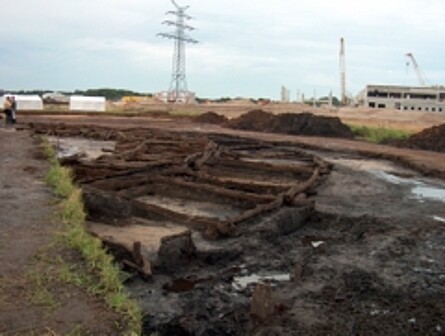Wood Species Identification for Structural Timbers of the Heidenwall, City of Oldenburg
During the course of a rescue excavation under the aegis of the Lower Saxony State Office for Heritage remarkably well preserved timbers of a fortress rampart were discovered in a palaeochannel of the River Hunte. Based on dendrochronological determinations by Dendrochronologisches Labor Göttingen (DELAG) the site had been erected in AD 1032 and its front expanded in 1042, probably for the purpose of stabilisation. Financially supported by the Office for Traffic and Roadworks of the City of Oldenburg, wood species identification of 409 samples was carried out by Dr. Felix Bittmann. The samples were dominated by alder (c. 61%) and oak (32%), and based on the dendrochronological analyses carried out in Göttingen their growth characteristics are indicative of a flood plain location (also containing c. 6% of willow). This assumption was supported by archaeobotanical analysis of 12 large-volume samples containing a multitude of species characteristic for water meadows and flood plains. Crop plants comprised rye and flax. Radiocarbon determinations of botanical remains from a well, assumed to be of late medieval or early post-medieval date, returned dates similar in age to that of the Heidenwall.
Bibliography
Fries, J. E., 2008: Burg zwischen Fluss und Moor : der Oldenburger "Heidenwall". Archäologie in Niedersachsen 11, 2008, 56-59.
Fries, J. E., 2007: Der "Heidenwall", eine Burganlage des 11. Jahrhundert: eine Rettungsgrabung als Beitrag zur Oldenburger Stadtgeschichte. Berichte zur Denkmalpflege in Niedersachsen 27,2007:4, 118-124.


